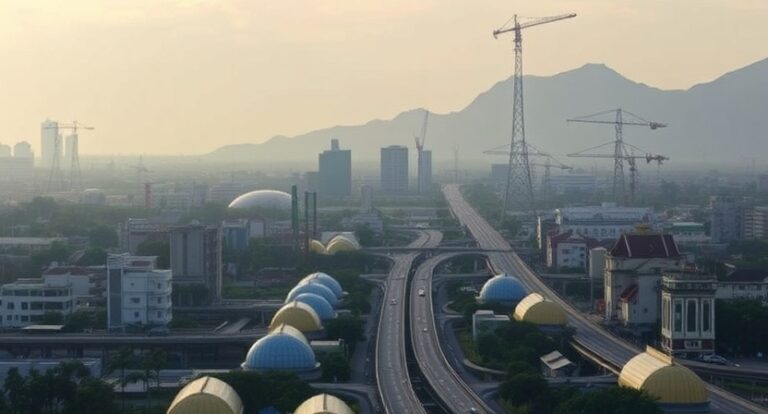
Cambodia’s Economic Outlook
Cambodia’s economy is forecast to grow by 5.6% in 2024 and 5.9% in 2025. This positive outlook is driven by a recovery in the garment sector and continued growth in non-garment manufacturing, sectors that are key for Asia sourcing agents and investors in the region. However, the country still faces challenges, including short-term external risks and domestic vulnerabilities, particularly within the banking and real estate sectors.
In 2023, Cambodia’s economy grew by 5.0%, supported by a recovery in the services sector, especially tourism, and growth in non-garment manufacturing, such as exports of solar panels, vehicle parts, and electrical goods. However, garment exports and the real estate sector remained weak. Looking ahead, the garment sector is expected to rebound thanks to stronger demand from advanced economies, while tourism recovery will continue to fuel growth. The non-garment manufacturing sector is expected to maintain momentum, supported by stable Foreign Direct Investment (FDI) inflows.
Inflation, which peaked in 2022, slowed significantly in 2023 to an average of 2.1%. In early 2024, inflation turned to modest deflation but is expected to rise slightly to 2.2% in 2024 and 2.3% in 2025 due to higher domestic demand and potential increases in energy prices. The current account turned into a surplus of 1.3% of GDP in 2023, helped by strong tourism, but is expected to return to a deficit in the medium term as the economy strengthens and demand for imports rises.
While Cambodia’s growth trajectory remains positive, the economy faces several risks, both external and domestic. External threats include slower economic growth in key partners like China, the U.S., and Europe, shifting global trade policies, and fluctuating commodity prices. Domestically, the banking sector is experiencing an uptick in non-performing loans (NPLs), particularly in high-risk sectors like real estate, hotels, and retail. A potential further weakening of the real estate market could lead to greater financial distress, posing risks to the banking system.
For Cambodia to ensure a strong, sustainable recovery, several key actions are needed, particularly for investors and Asia sourcing agents who may be navigating the country’s evolving landscape:
- Fiscal Consolidation: The Cambodian government must prioritize rebuilding fiscal space by improving spending efficiency and raising revenue. Streamlining tax incentives and diversifying public investment financing are essential for long-term fiscal sustainability.
- Banking Sector Stability: The National Bank of Cambodia should focus on normalizing post-pandemic policies by adjusting foreign currency reserve requirements and strengthening capital adequacy frameworks. This will bolster financial stability and provide a more secure environment for investment.
Real Estate Regulation and Oversight: Tightening regulation of the real estate sector, addressing shadow banking, and improving transparency and reporting will be key to mitigating risks in this vulnerable area. A stronger legal framework for real estate development will provide more stability for investors and developers.
Human Capital and Infrastructure Investment: Cambodia must continue investing in education, infrastructure, and digitalization to improve productivity and strengthen its position in the global value chain. Lowering logistics costs and enhancing digital connectivity will be crucial for maintaining growth in key sectors.
Cambodia’s economic outlook is promising, with strong growth expected in the coming years, driven by rebounds in key sectors like garments and manufacturing. However, risks such as banking sector vulnerabilities and a weakening real estate market must be carefully managed. For Asia sourcing agents and investors, this offers both opportunities and challenges. By staying informed of policy shifts, particularly in fiscal management, banking regulations, and real estate oversight, investors can navigate Cambodia’s evolving economy and position themselves for long-term success in this dynamic market.


